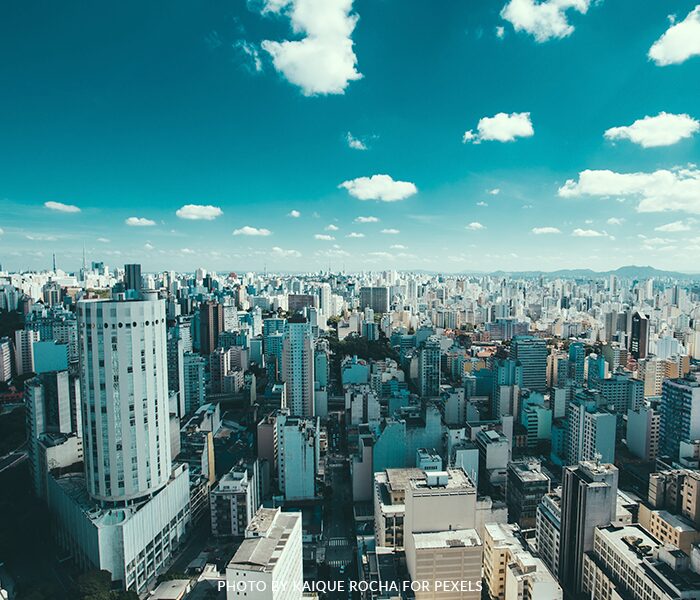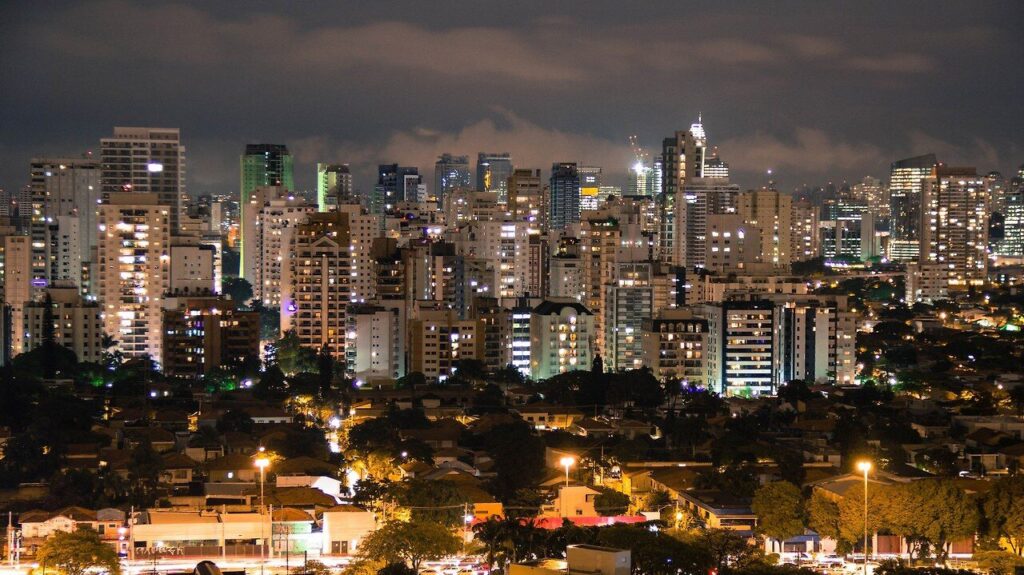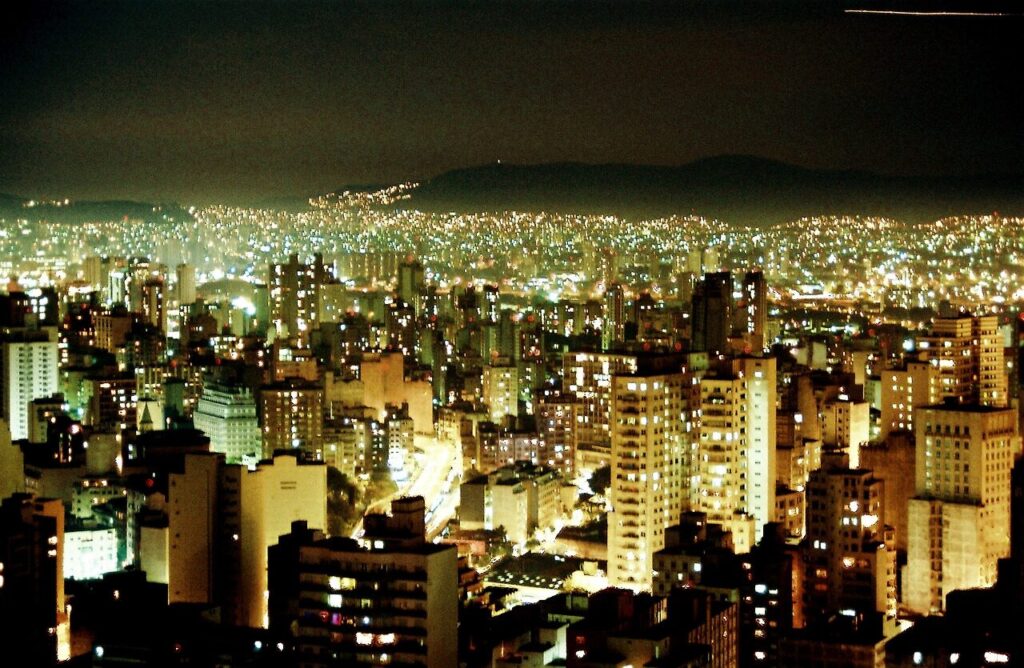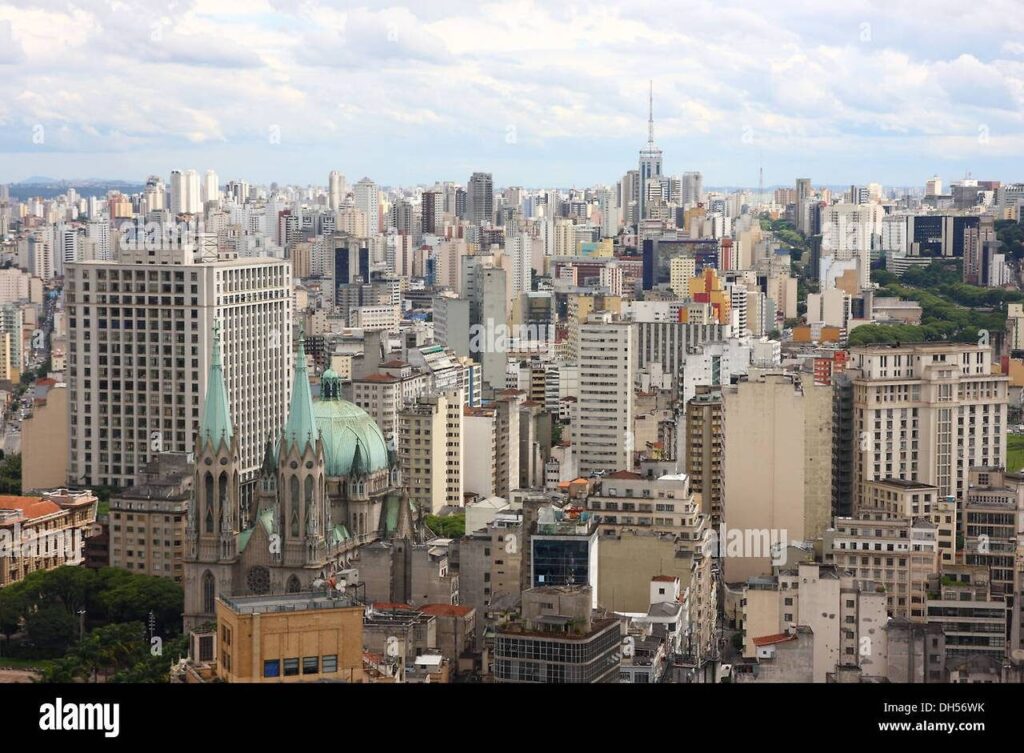São Paulo is the largest megacity in the Southern Hemisphere and South America, serving as Brazil’s economic, cultural, academic, and financial hub.

1. City Overview
- Population: The Greater Metropolitan Area (RMSP) is estimated to reach 22.99 million by 2025, an increase from approximately 20.74 million in 2022. The city proper had about 11.51 million in 2022, projected to be 10.02 million by 2025.
- Area: The city proper covers approximately 1,493 km², while the Greater Metropolitan Area (RMSP) spans about 7,951 km².
- Languages: The official language is Portuguese. Due to diverse immigrant communities, other languages such as Italian, Japanese, Arabic, and Korean are also spoken.
- Religion: Predominantly Catholic (58%), with Protestants (22%), no religion (9%), Spiritists (4.7%), and a coexistence of Jewish, Islamic, Buddhist, and indigenous faiths.
- Climate: Subtropical humid climate (Cfa/Cwa), with an annual average temperature of 18–22°C and annual rainfall of approximately 1,400 mm.
- Human Development Index (HDI): 0.805 (very high, as of 2010).
2. History
- Early Settlement and Colonial Period (1554–19th Century): Founded in 1554 by Jesuit missionaries, it began as a small agricultural and fishing town. It grew rapidly in the 19th century with the coffee boom.
- Industrialization and Urbanization (19th–20th Century): Transformed into an industrial hub based on railway and port infrastructure, experiencing significant population growth. It became a major industrial city through trade routes linking Portugal, Britain, and Brazil. Communities from Europe, Japan, and Lebanon were formed in the early 20th century.
- Modern Megacity (21st Century): Fully established as a financial center, witnessing explosive growth in its skyline and earning the nickname “Selva de Pedra” (Stone Jungle) due to its high-rise buildings. It is evolving into a vast platform for economy and culture.

3. Geography
- Location: Situated on the southeastern plateau of Brazil, at an altitude of approximately 760m.
- Climate: Subtropical humid.
- Urban Structure:
- Downtown/Paulista District: Financial and commercial hub.
- Suburbs/MNSP: Industrial and residential centers.
- Central Areas: Paulista and Avenida 9 de Julho.
- Immigrant Settlements/Slums: Many Favelas are present in the east and south.
- Outskirts and Satellite Cities: The Greater Metropolitan Area (RMSP) includes 39 municipalities/districts, such as Guarulhos, Santo André, and São Bernardo, with a population of approximately 20.7 million (2022), expanding to a super-large region of 33 million.
4. Culture
- Multicultural Fusion: The ‘Liberdade’ area is home to the largest Japanese immigrant community, coexisting with African, Italian, and Lebanese cultures.
- Festivals and Events: Known for diverse festivals including São Paulo Pride (second largest in the world), Jazz Festival, Bienal, Fashion Week, São Paulo Art Biennial, and Comic Con.
- Art & Design: Street Art in Vila Madalena’s Beco do Batman is a famous attraction. Notable architectural landmarks include MASP, Oscar Niemeyer’s Edifício Copan, and Copan.
- Cultural Facilities: Panaseca Museum, Museum of the Portuguese Language, and various film and music arenas.

5. Environment
- Pollution: Faces significant urban problems such as air, noise, and general pollution, along with severe traffic congestion.
- Water Insecurity: Vulnerable to water instability, drought, and flood risks due to climate change.
- Monitoring System: Operates 25,000 Smart Sampa surveillance cameras to enhance responses to crime and missing persons.
- Green Spaces: Efforts are being made to maintain green spaces like Ibirapuera Park, Billings Reservoir, and to revitalize the Tietê and Pinheiros riverside areas.
- Environmental Conservation: Public opposition and court injunctions have arisen due to the destruction of thousands of trees during infrastructure projects.
6. Economy
- Economic Scale: The city’s GDP (2017) was R$699 billion, projected to be the 6th largest among global cities by 2025. In 2023, the Greater Metropolitan Area’s GDP (PPP basis) was approximately US$531 billion, making it the largest in Latin America. It accounts for about 10% of Brazil’s national GDP and over one-third of São Paulo state’s GDP.
- Industrial Structure:
- Manufacturing: Includes automotive, machinery, food, and chemical industries.
- Financial Hub: Home to the B3 stock exchange, with major financial institutions concentrated in the Paulista and Faria Lima districts.
- Knowledge Industry: Features science and technology clusters (TEDS top 100) and education/research infrastructure centered around USP (University of São Paulo).
- Tourism and Service Industry: Growth in cultural tourism, luxury hotels, and services.

7. Key Locations
- Cultural & Architectural Landmarks:
- Museu de Arte de São Paulo (MASP): A center for contemporary art, designed by Lina Bo Bardi.
- Ibirapuera Park, Pinacoteca, Cinemateca Brasileira.
- Avenida Paulista: A central financial and cultural street.
- Edifício Copan, Edifício Itália: Masterpieces by Oscar Niemeyer.
- Other major Brazilian skyscrapers include Edifício Itália, Altino Arantes, and Mirante do Vale.
- Art Streets & Parks:
- Beco do Batman (Vila Madalena): A representative street art spot.
- Ibirapuera Park: A public resting place and venue for performances and festivals.
- Sambódromo: Carnival celebration venue.
- Interlagos F1 Circuit.
- Commercial & Cultural Complexes:
- Paulista Avenue: Financial and cultural street, with dedicated pedestrian and cycling days.
- Liberdade: Center for Japanese and Asian culture, with dense food and shopping areas.
- Bixiga: Italian town.
- Infrastructure:
- Guarulhos International Airport.
- Efficient public transportation (Metro, bus network).
- Smart Sampa surveillance system.
8. Conclusion
São Paulo is the largest megacity in the Southern Hemisphere and the economic, cultural, academic, and financial heart of Brazil.
- Strengths: Multiculturalism, vibrant arts and culture, global financial base, education and R&D hub.
- Challenges: Excessive population density, traffic and environmental issues, ecological preservation, aging infrastructure, water and power management, inequality, and surveillance concerns.
- Future Strategy: São Paulo’s future direction includes Smart City initiatives (Smart Sampa), expansion of green spaces, investment in cultural tourism, and socially inclusive urban regeneration. This also involves restoring waterways and urban rivers, expanding green spaces, improving power and water infrastructure, and adopting sustainable urban development and smart infrastructure.
